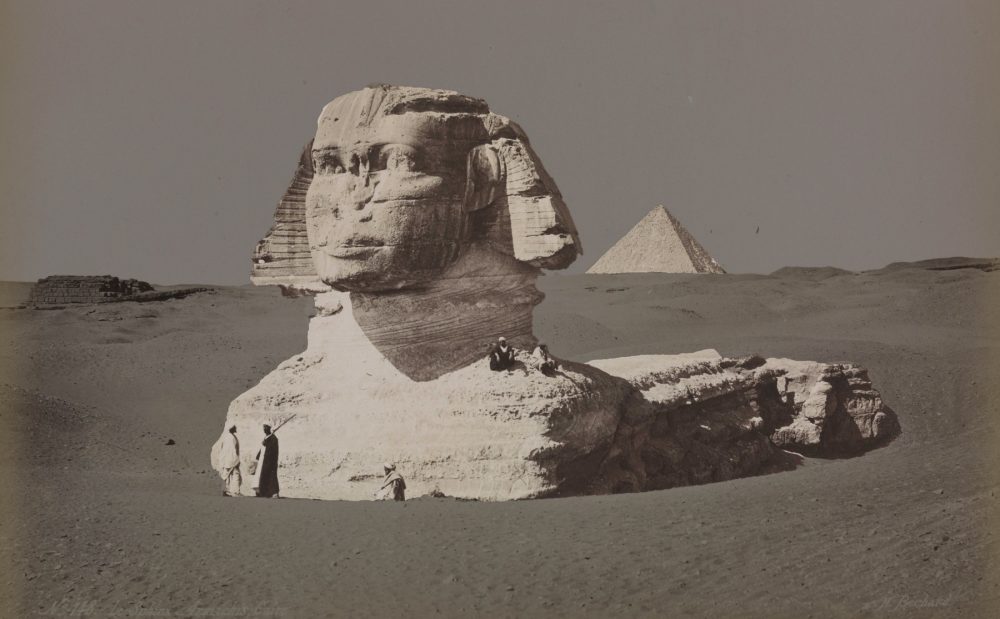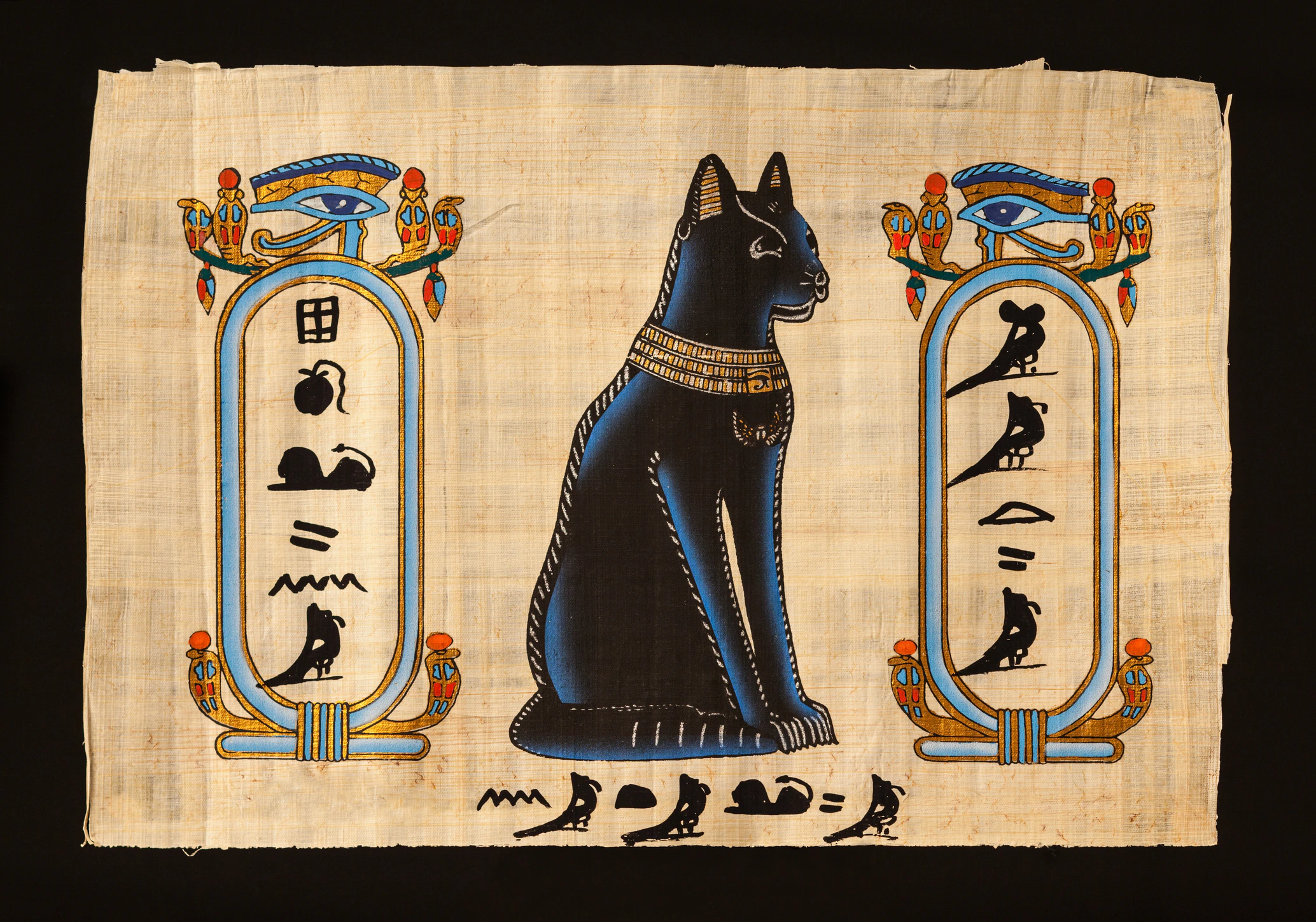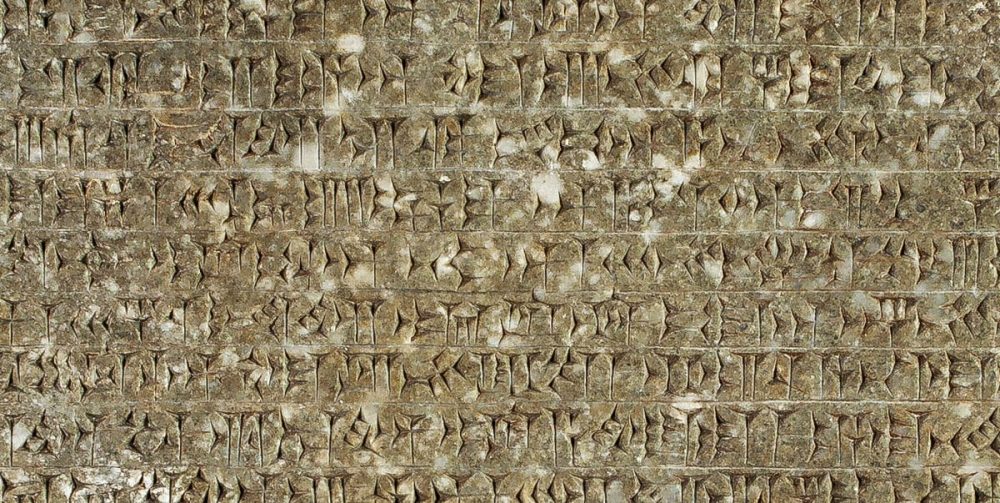"The Great Sphinx of Giza is more than simply a symbol of ancient and modern Egypt. It is the very embodiment of antiquity and mystery itself...."
Of all the monuments on Earth, not one is as striking, magical, and mysterious as the Great Sphinx of Giza. This ancient statue, believed to have been carved some 4,400 years ago, is the very embodiment of mystery.
We can’t write of the pyramids of Egypt, especially the first and second pyramids of Giza, without mentioning the massive statue. The Great Sphinx of Giza is, without a doubt, one of the most famous ancient monuments on Earth, and there is scarcely one person in the civilized world who is unfamiliar with its form and features.
The Great Sphinx is the guardian of the pyramids, and it has safeguarded the massive stone monuments for thousands of years. There is nothing as ancient and as big as the Great Sphinx, which is why the massive limestone statue is often synonymous with mystery.
Buried again and again
Although it has existed for thousands of years, the great Sphinx has remained buried beneath Egypt’s golden sands until 1926. Its neck only remained visible above the surface when experts began excavations. Throughout its long history, the Sphinx was buried, excavated, and buried by the sands on various occasions.
No written records from Khafre’s reign
There are no written records dating back 4,400 years–or the reign of Khafre, nor Khufu–that mention the Great Sphinx, its purpose, or exact age. Despite this, today, mainstream archeologists assure us that the Sphinx, free of sand and cleared from ruins, was likely carved during the reign of Khafre, the King credited with having built the second-largest pyramid at Giza.
Despite nearly nonexistent data dating back from its alleged charging data, Egyptologists–like Fakhry, Lehner, and Verner–believe that there is no doubt that the Sphinx is part of the pyramid complex of Khafre. Despite this, academics say that the Sphinx is a unique feature and no other Pharaohs in Egyptian history had such a statue carved.
Carved for Khafre?
The origin of the Sphinx, according to mainstream experts, can be traced back to the construction of the Pyramid of Khafre. Experts believe that the Sphinx is the result of an “accidental” statue; it was craved after limestone blocks were quarried from the deposit to build the pyramid.
The Great Sphinx faces the rising Sun. Its form, although simple, is majestic. Egyptologists believe that the Sphinx was carved in the likeness of Khafre, despite little evidence supporting this.

Carved, not built
The Sphinx occupies a vast, rocky amphitheater at the eastern edge of the plateau. This plateau was a quarry in ancient times, and the stones from it were used to build temples, pyramids, and private mastabas. The best stone was quarried, leaving a great mass of material “lying” next to the valley temple. This “mass” impeded the view of the Second Pyramid and seeing the pyramid from a distance must have been anything but pleasing.
The builders were therefore left with two options; either remove and quarry the limestone or shape it. Perhaps, as revealed by Fakhry (p158.), the natural shape of the limestone roughly resembled a crouching lion, and the architect of the Royal complex may have thought of the idea to shape the limestone into one, instead of removing it entirely.
Eventually, the Great Sphinx was visualized and carved into reality. What the Sphinx originally looked like is a mystery, since there are no illustrations of the massive limestone statue dating back to the reign of Khafre.
Repaired since ancient times
The Sphinx was originally carved from the living rock without additional masonry. However, due to the softness of the stone, its paws and body became eroded over time. Sandstones are thought to have contributed greatly to the erosion of the monument. From time to time, the Sphinx was restored and repainted.
Not everyone agrees on Khafre=Sphinx
Although mainstream experts are convinced that the Sphinx was carved in the time of Khafre, and is meant to portray the King, some of the first experts to study, catalog, and explore the ancient monument were apparently convinced that the Sphinx dated back further than the Fourth Dynasty.
The mystery surrounding the Sphinx is perhaps best explained by Selim Hassan, who, in 1949, excavated the monument and studied its origin. In his book The Sphinx: Its history in the light of recent excavations, Hassan revealed:
Taking all things into consideration, it seems that we must give the credit of erecting this, the world’s most wonderful statue, to Khafre, but always with this reservation: that there is not one single contemporary inscription which connects the Sphinx with Khafre; so, sound as it may appear, we must treat the evidence as circumstantial, until such time as a lucky turn of the spade of the excavator will reveal to the world a definite reference to the erection of the Sphinx.
Other than the location of the Sphinx, the only thing that connects it to Khafre is a diorite statue that was discovered buried in the debris of the Valley Temple, and a stele erected around 1388 BC by Thutmose IV, which mentions Khafre;
…which we bring for him: oxen … and all the young vegetables; and we shall give praise to Wenofer … Khaf … the statue made for Atum-Hor-em-Akhet…

Flinders Petrie wrote in 1883;
The date of the Granite Temple [Valley Temple] has been so positively asserted to be earlier than the fourth dynasty, that it may seem rash to dispute the point…
Petrie was of the belief that the Great Sphinx and the associated temples predate the Fourth Dynasty reign of not only Khafre but Khufu and Menkaure as well.
However, it was perhaps Egyptologist Miroslav Verner who best described the Sphinx and its significance:
The Great Sphinx of Giza is more than simply a symbol of ancient and modern Egypt. It is the very embodiment of antiquity and mystery itself. Over the centuries it has fired the imaginations of poets and scientists, adventurers and travelers. Although it has often been measured, described, investigated using the most up-to-date scientific technical means, and discussed at special scientific conferences, fundamental questions remain unanswered: Who built it, when, and why? (234).
If it’s not mainstream, it’s a fringe theory
There are some very strict academic views on the Great Sphinx that tells us that anything that’s not related to Khafre, the pyramids, and the Fourth Dynasty is a fringe theory. As Such, the Orion Correlation theory, proposed by Hancock and Bauval, is not even considered among mainstream experts. This theory suggests that the Pyramids of Giza, as well as the great Sphinx, were built at least around 10,500 BC and that the movements mimic the position of the stars and constellations (Orion–pyramids, Leo–Sphinx).
It is very, very old
As I’ve explained in previous articles, the Sphinx is very, very, old. Already to the ancient Egyptians that lived under the rule of King Tut, the Sphinx was a remnant of a time long gone. In fact, it is so ancient that the first documented attempted excavation dates back to around 3,400 years ago when a young man called Thutmose IV gathered people who, after a great effort, managed to excavate the paws of the statue.
After having excavated part of the Sphinx, Thutmose IV placed a granite slab known as the Dream Stele in between its paws.
Rameses II The Great Also understood excavations around 1,213 BC.

The Sphinx’s Nose and beard
Most people believe that Napoleon is responsible for destroying the nose of the great Sphinx, however, this is not the case. Drawings of the Sphinx made by Frederic Louis Norden in 1757 show the Sphinx with a nose already destroyed.
However, Arab historian Al-Maqrizi clears the mystery up. In the 15th century, he wrote that the loss of the nose of the Sphinx is attributed to a man called Muhammad Sa’im al-Dahr, who defaced the Sphinx in the act of iconoclasm.
In addition to the missing nose, the Sphinx misses its beard. Part of a limestone beard of the Sphinx are located in the British Museum. We don’t know whether the Sphinx had a beard originally, or if it was a later addition.
Colorfully painted
Although the Sphinx as it is today is far from what it looked like in ancient times, Egyptologists believe that in the distant past, it was “decked out in gaudy comic-book colors.”
Different analyses of the ancient statue have shown residues of red pigments on the Sphinx’s phase. Researchers have also found traces of yellow and blue paint on the body of the Sphinx.
Join the discussion and participate in awesome giveaways in our mobile Telegram group. Join Curiosmos on Telegram Today. t.me/Curiosmos
References: Ahmed Fakhry, the Pyramids / Selim Hassan, The Sphinx: Its history in the light of recent excavations Miroslav Verner, The Pyramids: The Mystery, Culture, and Science of Egypt’s Great Monuments





